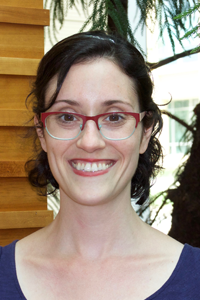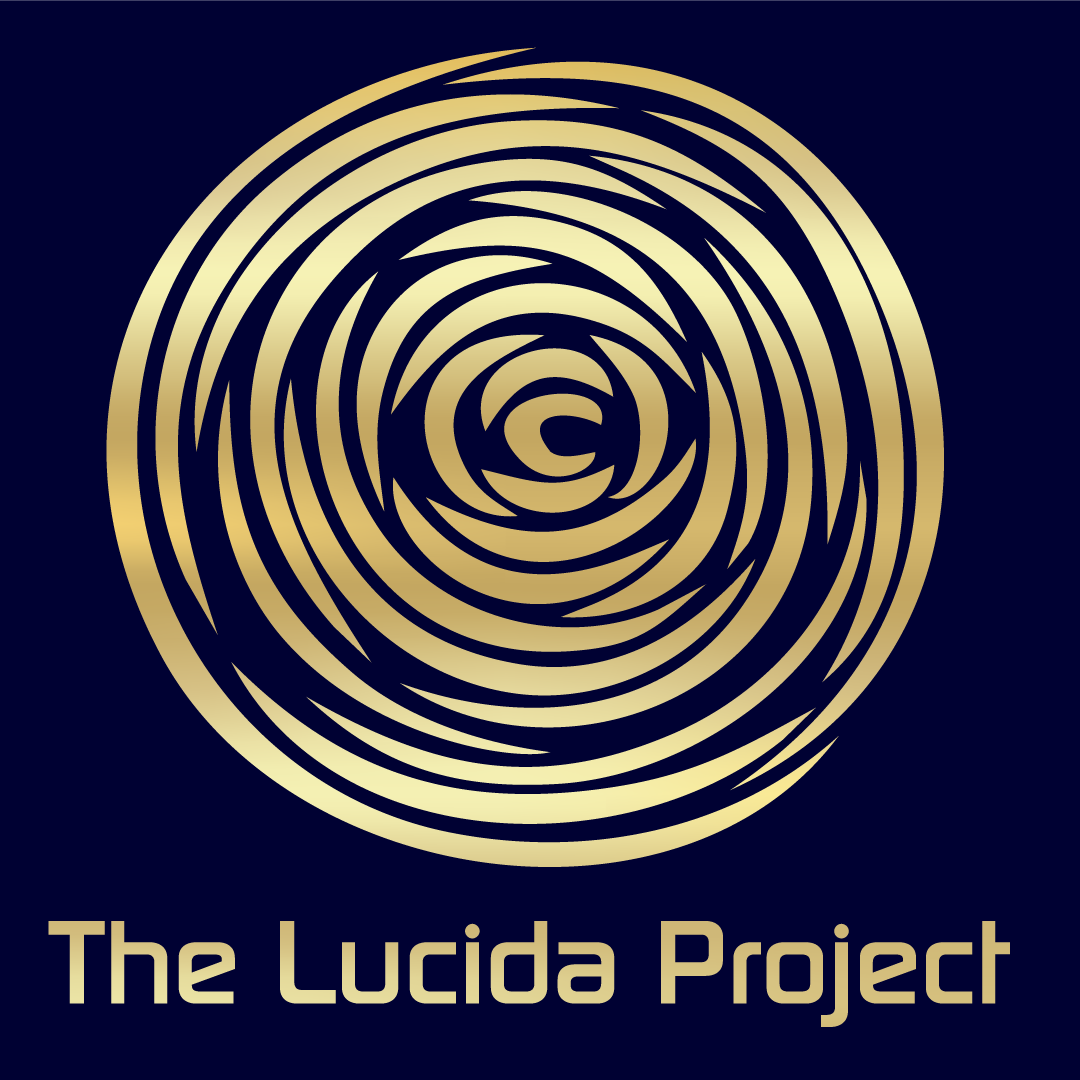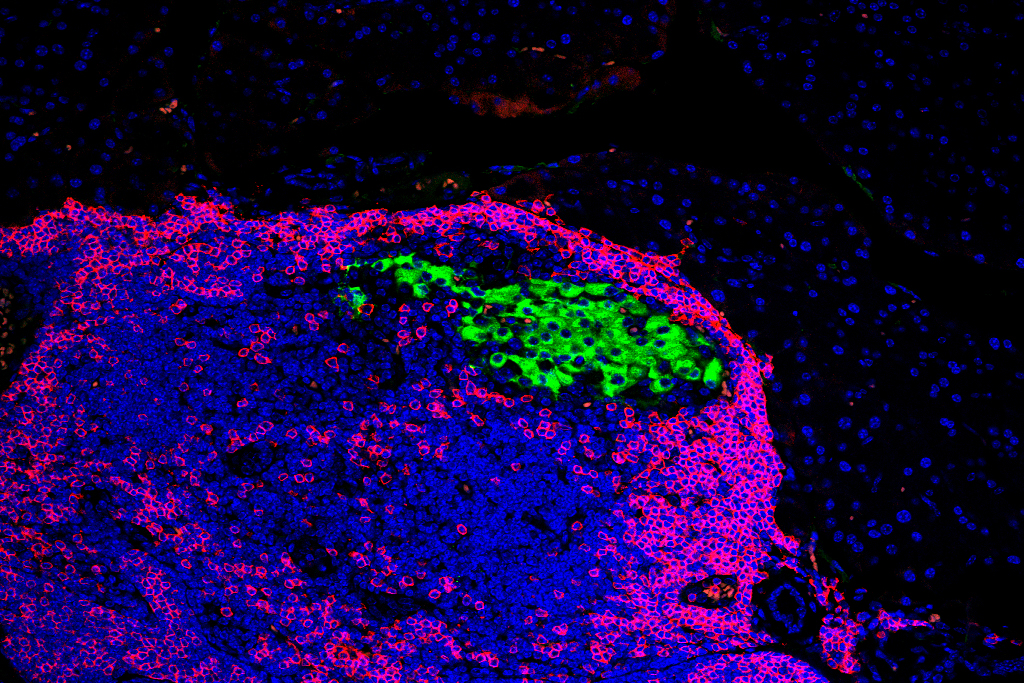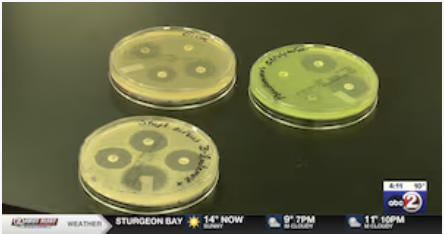When Communicating with Color, Balance Can Be a Path to Accuracy
More than just pleasing to the eye, color can be used to communicate messages quickly and effectively.
Figuring out a good way communicate using color can be difficult, because the same color can signal different meanings — and different colors can signal the same meaning. Red means stop to a driver approaching an intersection, and high temperatures on a weather map, and … discard your empty plastic bottle here?

Karen Schloss
Researchers from the University of Wisconsin–Madison have developed a method for designing color-coding systems that are easy enough to interpret that no labels or other hints are necessary. Psychology professor Karen Schloss and electrical and computer engineering professor Laurent Lessard, both of the Wisconsin Institute for Discovery, used recycling bins as a test case in a study published recently in the journal Cognitive Research: Principles and Implications.
“If you want to design bins for discarding paper, plastic, glass, metal, compost and trash, which colors should you use?” asks Schloss, who studies how we respond to and interpret color. “You might think that simply using labels would be enough and the colors are just decorative. But, it is more difficult for people to get the right message when colors do not match people’s expectations based on the labels.”
For example, it would be confusing if a sign labeled “blueberries” was red and a sign labeled “strawberries” was blue.
The researchers found that the best colors to use for the recycling task were shades of white for paper, red for plastic, pale blue-green for glass, dark grey for metal, dark green for compost, and black for trash.
“Our goal is to expand and automate the process of creating easily interpretable color-coding systems.”
Karen Schloss
They began by asking people which of 37 standardized colors they most strongly associated with each of the recyclables and trash. But overlapping color associations meant simply using the most strongly associated color for each bin would produce a confusing and ineffective design.
“For paper, plastic and glass, the top few colors are pretty similar for all three — white and gray,” Lessard says. “And if you look at compost and trash, the top colors for those — brown, yellow and green — are pretty similar, too.”
The challenge was to strike the right balance between picking colors that are strongly associated with the corresponding recyclables and picking colors that avoid confusion. This led to unexpected results. For example, the researchers learned red was the best color to use for plastic even though the association between red and plastic was relatively weak.
Lessard likens the color-coding problem to a common class of problems in what is known as operations research.

Laurent Lessard
“Similar trade-offs arise when solving scheduling and logistics problems in industry, such as getting packages to their destinations on time or scheduling flights at an airport in a way that minimizes delays.” Lessard continued: “We arrived at our solution for the color-coding problem by using these very same techniques.”
Another group of study participants confirmed the resulting color set, correctly indicating which colored bin was for each kind of recyclable despite the bins being unlabeled and otherwise identical.
Although the present study — conducted with co-authors Charlotte Walmsley of Massachusetts General Hospital and UW–Madison psychology student Kathleen Foley — focused on recycling, Schloss describes a broader vision for their approach.
“Our goal is to expand and automate the process of creating easily interpretable color-coding systems,” she says. “This understanding will not only lead to more effective uses of color in design but will also advance our understanding of how people infer meanings from colors.”
But before achieving that goal, Schloss says, there are some complex wrinkles to work out. It would be necessary to find the association strengths between all possible colors and all possible concepts— an impractical feat to accomplish by having participants make all those judgments in the laboratory, as was done in the recycling study. Instead, the researchers believe they could mine the necessary data with an automated approach such as using Google Image Search or another database of labeled images.
Schloss and Lessard credit the collaborative culture at the Wisconsin Institute for Discovery for enabling a project at the intersection of psychology and optimization. “It’s the sort of thing I don’t think either of us could have done on our own because we have such different skill sets and expertise–I knew nothing about color before,” says Lessard. “It has been educational for both us, but also could not have happened if either of us had tried to do it on our own.”
This research was supported by UW–Madison, the Wisconsin Alumni Research Foundation, and the Center for Vision Research at Brown University.
This article by Chris Barncard originally appeared on news.wisc.edu.





